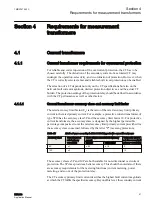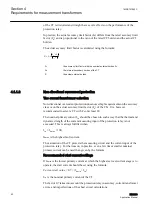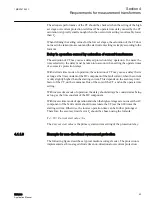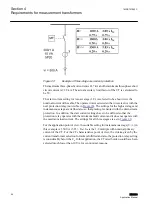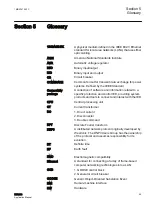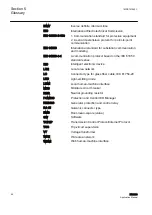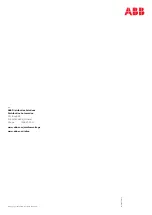
of the CT is distorted and it might have severe effects on the performance of the
protection relay.
In practise, the actual accuracy limit factor (F
a
) differs from the rated accuracy limit
factor (F
n
) and is proportional to the ratio of the rated CT burden and the actual CT
burden.
The actual accuracy limit factor is calculated using the formula:
F
F
S
S
S
S
a
n
in
n
in
≈
×
+
+
A071141 V1 EN
F
n
the accuracy limit factor with the nominal external burden S
n
S
in
the internal secondary burden of the CT
S
the actual external burden
4.1.1.2
Non-directional overcurrent protection
The current transformer selection
Non-directional overcurrent protection does not set high requirements on the accuracy
class or on the actual accuracy limit factor (F
a
) of the CTs. It is, however,
recommended to select a CT with F
a
of at least 20.
The nominal primary current I
1n
should be chosen in such a way that the thermal and
dynamic strength of the current measuring input of the protection relay is not
exceeded. This is always fulfilled when
I
1n
> I
kmax
/ 100,
I
kmax
is the highest fault current.
The saturation of the CT protects the measuring circuit and the current input of the
protection relay. For that reason, in practice, even a few times smaller nominal
primary current can be used than given by the formula.
Recommended start current settings
If I
kmin
is the lowest primary current at which the highest set overcurrent stage is to
operate, the start current should be set using the formula:
Current start value
< 0.7 × (I
kmin
/ I
1n
)
I
1n
is the nominal primary current of the CT.
The factor 0.7 takes into account the protection relay inaccuracy, current transformer
errors, and imperfections of the short circuit calculations.
Section 4
1MRS757582 C
Requirements for measurement transformers
52
REG630
Application Manual
Summary of Contents for Relion 630 Series
Page 1: ...RELION 630 SERIES Generator Protection and Control REG630 Application Manual...
Page 2: ......
Page 16: ...10...
Page 63: ...57...














